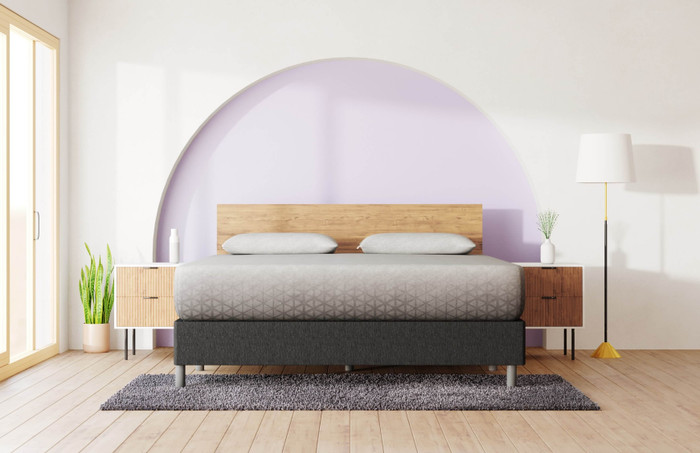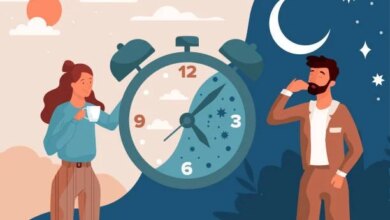How to Sleep With Chronic Incontinence?

July 18th, 2025 . 9 mins read
Key Takeaways
- Nighttime incontinence severely disrupts sleep but is manageable: The combination of discomfort, anxiety about leaks, and frequent bathroom trips can lead to sleep deprivation. However, using absorbent products, waterproof bedding, and creating a structured bedtime routine can greatly reduce sleep interruptions.
- The right mattress and environment make a big difference: A breathable, waterproof, and pressure-relieving mattress—paired with supportive accessories like underpads, nightlights, and bedside commodes—can protect skin health, improve comfort, and make nighttime management easier and more hygienic.
- Bladder training, lifestyle changes, and medical support are essential: From pelvic floor exercises and dietary adjustments to professional evaluation and therapy, a holistic approach empowers individuals to take control of their incontinence and restore restful, dignified sleep.
Chronic incontinence doesn’t just affect your waking hours—it can significantly disrupt your ability to get restorative sleep.
The fear of leakage, the discomfort of damp sheets, and the repeated urge to urinate during the night can make it incredibly difficult to relax and fall into a deep sleep.
Over time, this can lead to sleep deprivation, low energy levels, increased irritability, and a decline in overall health.
However, with the right strategies and support systems, it is absolutely possible to manage chronic incontinence at night and achieve a peaceful, uninterrupted night’s rest.
How To Sleep Better With Chronic Incontinence
1. Use the Right Incontinence Products
One of the most effective ways to manage nighttime incontinence is by investing in products designed specifically for overnight protection.
These include super-absorbent adult diapers or briefs, which are engineered to hold a higher volume of urine and provide better leak guards around the legs.
Unlike daytime products, nighttime options offer extended wear and help keep moisture away from the skin to prevent irritation or infection.
Disposable or reusable bed pads—often called underpads or “chux”—can be placed on top of your sheets to create a protective barrier in case of leakage.
Additionally, a waterproof mattress protector is essential, as it shields the mattress from stains, odours, and long-term damage.
For added comfort, opt for moisture-wicking sheets or bedding made from breathable materials like bamboo or cotton blends. These fabrics dry quickly and help maintain a cooler, drier sleep environment throughout the night. With the right gear, you can go to bed feeling more confident and relaxed.
2. Establish a Consistent Nighttime Routine
Creating a calming, structured bedtime routine can significantly reduce the chances of nighttime accidents and improve your sleep quality.
Begin by reducing your fluid intake two to four hours before bedtime, especially drinks that irritate the bladder, such as caffeine, citrus juices, and carbonated beverages. Before getting into bed, make sure to completely empty your bladder.
A technique called double voiding can be especially helpful—after urinating, wait a few minutes and try again to ensure the bladder is fully emptied. If you experience swelling in your legs, try elevating your feet in the evening.
This allows retained fluids to circulate and be processed by the kidneys before sleep, reducing nighttime bathroom trips.
Additionally, applying a barrier cream to sensitive areas can prevent rashes or skin damage caused by moisture. A peaceful, regular routine helps your body wind down and signals your brain that it’s time for uninterrupted rest.
3. Optimise Your Sleep Environment
Your bedroom should be a haven of comfort and safety, especially when managing chronic incontinence.
Start with the basics: ensure your bed is protected with a waterproof mattress cover and incontinence pads that are easily replaceable if accidents occur. Keep a nightlight in the hallway or bathroom to make nighttime trips safer and less disruptive to your sleep cycle.
If mobility is an issue or if you wake up frequently with urgency, consider placing a bedside commode or portable urinal within reach.
This reduces the effort and time it takes to get to the bathroom. Store essential supplies—like extra briefs, underpads, and personal wipes—in a nightstand or bedside basket so you’re always prepared.
Also, choose loose, breathable sleepwear that doesn’t trap heat or moisture. Light, cotton-based pyjamas are ideal for keeping your skin comfortable and dry. These changes can help you feel more at ease, improving your chances of sleeping through the night without unnecessary worry.
4. Practice Bladder Training and Strengthening
For some individuals, especially those with urge incontinence, bladder training can help regain better control over nighttime urination.
This involves gradually increasing the time between bathroom trips during the day to “stretch” the bladder’s capacity. You might start by going every hour and slowly increase to 90 minutes, then two hours.
Over time, your bladder becomes accustomed to holding more urine. Additionally, pelvic floor exercises—commonly known as Kegel exercises—can strengthen the muscles that control urination. These exercises involve tightening and holding the pelvic muscles for several seconds, then relaxing.
Doing them consistently, multiple times a day, can lead to improved bladder control over weeks or months. Keeping a bladder diary can help track your fluid intake, bathroom visits, and leakage episodes. This can be especially useful in identifying patterns or triggers that worsen incontinence at night and adjusting your routine accordingly.
5. Consult a Healthcare Professional
While lifestyle changes and at-home solutions can make a big difference, it’s important not to ignore the need for professional medical advice.
A healthcare provider—such as a urologist or continence nurse—can conduct a thorough evaluation to determine the underlying cause of your chronic incontinence.
They may recommend tests like urodynamic studies, which assess how your bladder and urethra function. Depending on your situation, you may benefit from prescription medications that reduce bladder spasms or increase bladder capacity.
In some cases, advanced treatments like nerve stimulation, Botox injections, or surgical interventions may be appropriate.
Additionally, a referral to a pelvic floor therapist can be life-changing, especially for those with muscle weakness or structural issues. Don’t suffer in silence—getting a professional diagnosis and personalised treatment plan is a critical step toward reclaiming restful sleep and a better quality of life.
6. Make Smart Lifestyle and Dietary Changes
Daily habits can play a major role in managing nighttime incontinence.
Start by examining your diet for bladder irritants such as spicy foods, citrus fruits, chocolate, artificial sweeteners, and acidic drinks. These substances can increase bladder sensitivity and contribute to urgency.
While it’s important to stay hydrated during the day, concentrate your fluid intake earlier and begin tapering off in the late afternoon. Avoid drinking anything within two hours of bedtime.
Maintaining a healthy weight can also alleviate pressure on the bladder, especially in people with central obesity. Even a modest weight loss can lead to noticeable improvements in urinary control.
Smoking cessation is another essential lifestyle change—smoking irritates the bladder lining and leads to chronic coughing, which can exacerbate leakage.
Incorporating light exercise, especially core and pelvic strengthening workouts, can also support bladder control. These everyday choices can build a foundation for long-term improvement in both incontinence symptoms and overall health.
7. Don’t Ignore the Emotional Impact
Living with chronic incontinence, especially at night, can be emotionally exhausting. Many people feel ashamed, anxious, or socially isolated because of their condition.
This emotional toll can worsen sleep disturbances and contribute to feelings of depression or helplessness. It’s crucial to address these psychological aspects with the same level of care and attention as the physical symptoms.
Joining a support group, whether in person or online, can be incredibly validating and helpful. Hearing from others who understand your struggles can provide encouragement and useful tips.
Counselling or therapy, especially cognitive behavioural therapy (CBT), can help reframe negative thought patterns, reduce embarrassment, and build coping skills.
If you share your bed with a partner, open communication is essential.
Most partners are supportive when they understand what you’re going through, and having that support can reduce your stress and improve intimacy. Mental and emotional wellness is a crucial part of successfully managing chronic conditions like incontinence.
Understanding Chronic Incontinence at Night
Chronic incontinence is a long-term condition involving the involuntary loss of urine, and when it happens during sleep, it’s commonly referred to as nocturnal incontinence or nocturia. This condition can affect people of all ages, but becomes more prevalent in older adults.
Nocturia may occur due to several underlying causes, such as overactive bladder, neurological conditions like multiple sclerosis or Parkinson’s disease, diabetes, enlarged prostate in men, or hormonal shifts in women after menopause.
Additionally, medications such as diuretics or antidepressants may contribute to nighttime urination.
Some people also suffer from low bladder capacity or weakened pelvic floor muscles that fail to hold urine through the night. Identifying the cause of chronic incontinence is critical because it determines the best management approach, whether that involves medical intervention, behavioral therapy, or lifestyle adjustments.
Why Nighttime Incontinence Disrupts Sleep?
People living with nighttime incontinence often experience frequent sleep disruptions. These interruptions can be caused by waking up with the urge to urinate, anxiety about leakage, or physical discomfort from wet bedding and clothing.
Even a single episode of bedwetting can cause someone to wake up fully, change clothes or sheets, and struggle to fall back asleep.
Over time, the cumulative effects of disturbed sleep can be profound. The body misses out on crucial deep sleep stages, including REM sleep, which is necessary for emotional regulation, memory processing, and immune system function.
Additionally, the emotional toll of embarrassment or fear of judgment—especially if sharing a bed with a partner—can increase stress and lead to insomnia.
Without appropriate management, nighttime incontinence becomes a cycle of discomfort, emotional distress, and declining physical health.
How Mattresses Impact Sleep for Individuals With Chronic Incontinence?
When living with chronic incontinence, the mattress you sleep on plays a more important role than most people realise. It’s not just about comfort—it’s about protection, hygiene, pressure relief, and ease of maintenance.
The right mattress can significantly improve sleep quality, while the wrong one may worsen discomfort, cause skin issues, or even become a source of stress due to frequent cleanups.
1. Waterproof Protection and Hygiene
For individuals with chronic incontinence, one of the most immediate concerns is keeping the mattress clean and dry.
Urine leaks can quickly seep into the core layers of a mattress, causing odours, bacterial growth, and permanent stains.
A mattress that lacks waterproofing or doesn’t pair well with protective layers becomes a breeding ground for mould and microbes, compromising hygiene.
That’s why waterproof mattress protectors or built-in moisture barriers are essential. Some premium mattresses are designed with fluid-resistant covers, which are easier to clean and do not retain moisture.
These materials help prevent liquids from penetrating into the deeper layers, preserving both the longevity of the mattress and the cleanliness of the sleeping environment.
2. Breathability and Skin Health
People who experience incontinence often spend time sleeping in damp conditions before they wake up and change. Prolonged exposure to moisture, heat, and friction can lead to skin irritation, bedsores, or urinary dermatitis.
That’s why the breathability of the mattress surface is extremely important. A good mattress should be made of airflow-promoting materials like open-cell foam, latex, or advanced cooling fabrics.
These materials allow heat and moisture to dissipate quickly, helping keep the skin cooler and drier throughout the night. This is especially helpful for those with sensitive skin or limited mobility who might not notice wetness immediately.
A breathable mattress reduces the risk of skin damage and supports better overall health.
3. Firmness and Pressure Relief
Incontinence often goes hand-in-hand with other health conditions like limited mobility, obesity, or age-related discomfort. These factors make mattress firmness a critical element.
A mattress that is too soft may make it harder to move around or get out of bed quickly in case of an accident.
On the other hand, a surface that is too firm can cause pressure points, particularly for side sleepers or those with joint issues. The ideal mattress for someone managing incontinence is one that offers balanced support and cushioning, such as medium-firm memory foam, hybrid mattresses, or latex-based designs.
These materials conform to the body to relieve pressure, while still providing enough support to help with repositioning during the night.
4. Ease of Cleaning and Maintenance
Dealing with nighttime accidents means cleaning becomes part of the bedtime routine.
Mattresses that are difficult to clean—such as traditional innerspring models without protective barriers—can be frustrating and unsanitary. In contrast, many modern mattresses now come with removable, washable covers or are made from non-porous materials that wipe clean easily.
For individuals managing chronic incontinence, this convenience makes a huge difference.
Regular cleaning not only extends the life of the mattress but also minimizes odors and maintains a hygienic sleeping surface.
Investing in a mattress that is easy to maintain reduces the burden on caregivers or the individual themselves, making nightly cleanup less stressful.
5. Compatibility With Incontinence Accessories
A mattress should work in harmony with other incontinence products.
For example, a mattress with a non-slip surface is ideal for holding underpads or incontinence sheets in place, reducing the risk of bunching or shifting during sleep.
Additionally, mattresses with edge support make it easier for individuals to sit up, reposition, or transition in and out of bed—important for anyone who needs to use the restroom multiple times at night.
Some hospital-grade mattresses even include adjustable bases and fluid-repelling seams, which enhance safety and mobility for people with severe incontinence or limited independence.
The compatibility of a mattress with such tools and accessories can enhance sleep quality and overall incontinence management.
6. Durability Under Frequent Use
Incontinence may require more frequent sheet changes, spot cleaning, and product replacements. These activities place extra stress on the mattress. A durable mattress that holds up under regular use and cleaning is a worthwhile investment.
Materials like high-density foam, natural latex, and reinforced hybrid coils tend to last longer than low-grade foams or traditional springs.
A mattress with warranties that cover fluid damage or offer antimicrobial protection is even more beneficial.
This ensures that the mattress will continue to perform well over time without sagging, losing shape, or becoming a hygiene hazard after repeated accidents.
Final Thoughts
Sleeping with chronic incontinence presents real challenges, but with thoughtful planning, appropriate tools, and professional support, you can regain confidence and control over your nights.
Managing incontinence at bedtime is about more than just preventing leaks—it’s about protecting your sleep quality, mental well-being, and dignity.
By combining absorbent products, consistent routines, bladder training, lifestyle changes, and medical guidance, you can create a peaceful sleep environment that works for you.
Remember that incontinence is a medical condition, not a personal failure—and help is available. You deserve restful, uninterrupted sleep, and with the right approach, it is within reach.
This article is for informational purposes and should not replace advice from your doctor or other medical professional.


